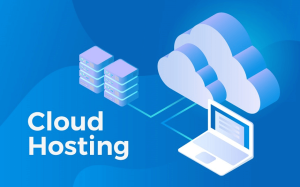What Has Changed for Predictive Analysis in 2019?

In 2009, Netflix announced an offer of $1 million for any team or person who can enhance the quality of their suggestive program tool by just 10%. A team did it after a couple of years. Netflix fulfilled the promised amount. However, they disregarded the code used by the team after that.
As a result, the predictive algorithm developed by the team failed to scale. Nevertheless, it solved a long overdue problem: The switch from the traditional mail into streaming throughout that similar time frame. As an effect, it gave the company all the information required to create more up-to-date and competitive algorithms.
Predictive analytics, as they call it, is not a universal cure. It wasn’t a panacea by that year and neither until this date. What just changed is that in 2019, these upgrades no longer costs a million dollars:
- The storage is at a much lower price;
- You gain more data than before; and
- Cloud computing as scalable as ever.
What is predictive analytics?
In the business world, big names in the industry use this. A lot of businesses utilize predictive analytics to anticipate what may happen in the future by merely observing past events. It helps them in reducing uncertainties and to figure out some opportunities. Examples of the benefits of using this are being able to create a plan for economic recessions or assuming the value of a company’s clients on a lifetime scale. There are a lot of things that may go out of hand, so it’s imperative for those who use this to follow a prediction with caution and pick tools that are safe to use.
What has changed since 2009?
#1. You’re offered more data, storage, and computing power.
Incredibly huge repositories of data from the customers, also known as data lakes, are one of the raw materials needed for the apps that use predictive analysis.
Several companies have bought big cloud spaces even without a foolproof plan for the benefit of having an inexpensive cloud memory where you can store data for as long as you want – even without keeping in mind its possible use.
#2. Everything is predicted real-time
For many people, it’s now the golden age for the said feature (predictive analysis).
Moreover, some companies such as Versium and Mintigo provide instant solutions for lead scoring, which shows that the switching is actually achievable.
Nonetheless, although it’s attainable, it doesn’t mean that the transition itself has no risks involved. The company vice president of Futurity, Sam Underwood, admitted the risks associated with these essential integrations.
The gap still hinders a lot of things, even the most basic conditions (related to business) of real-time or instant predictive analytics. Furthermore, it’s the reason why many personalities all over the world are still interested in predictive analytics, even though only a few adopt its concept.
#3. Not fast when it comes to adoption but incredibly high in interest
What is the exact number of businesses that are diligently utilizing predictive analytics? As stated by the study of Dresner Advisory Services, almost 23% use this and the figure has never changed from the past year.
However, according to that research, many businesses are contemplating and are open to the possibility of using advanced real-time predictive analytics.
So what particular questions are answered or solved by this 23 %? Let’s see.
Questions that Marketers can solve by Using Predictive Analytics
As said by Underwood, these companies want to get a prediction of everything. After all, who doesn’t like to figure out the total number of web traffic day by day, in an hour, or even a month to properly allocate their staff?
Underwood adds that he wants clients to see that if that one important thing can be predicted, it would surely skyrocket their chance to be successful in their respective fields.
Also, when talking about digital marketing, Squark’s Judah Phillips stated the innumerable cases where predictive analytics can be used, and this consists of the ability to forecast:
– Which test, personalization, or segment is best for people to respond?
– Which marketing channels, campaigns, behaviors, and touches are included in an outcome related to business?
– Which ad or marketing strategy will win as the most efficient?






